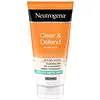What's inside
What's inside
 Key Ingredients
Key Ingredients

No key ingredients
 Benefits
Benefits

 Concerns
Concerns

 Ingredients Side-by-side
Ingredients Side-by-side

Betula Platyphylla Japonica Juice
Skin ConditioningButylene Glycol
HumectantGlycerin
HumectantDimethicone
EmollientBetaine
HumectantCetearyl Alcohol
Emollient1,2-Hexanediol
Skin ConditioningCetearyl Olivate
Sorbitan Olivate
EmulsifyingEthylhexylglycerin
Skin ConditioningHydroxyethyl Acrylate/Sodium Acryloyldimethyl Taurate Copolymer
Emulsion StabilisingEthyl Hexanediol
SolventXanthan Gum
EmulsifyingAllantoin
Skin ConditioningPanthenol
Skin ConditioningSodium Hyaluronate
HumectantSodium Lactate
Buffering4-Terpineol
MaskingWater
Skin ConditioningBetula Platyphylla Japonica Juice, Butylene Glycol, Glycerin, Dimethicone, Betaine, Cetearyl Alcohol, 1,2-Hexanediol, Cetearyl Olivate, Sorbitan Olivate, Ethylhexylglycerin, Hydroxyethyl Acrylate/Sodium Acryloyldimethyl Taurate Copolymer, Ethyl Hexanediol, Xanthan Gum, Allantoin, Panthenol, Sodium Hyaluronate, Sodium Lactate, 4-Terpineol, Water
Water
Skin ConditioningGlycerin
HumectantPropylene Glycol
HumectantCetyl Alcohol
EmollientC12-15 Alkyl Benzoate
AntimicrobialStearyl Alcohol
EmollientGlyceryl Stearate
EmollientPEG-100 Stearate
C12-15 Alkyl Lactate
EmollientAloe Barbadensis Leaf Extract
EmollientChamomilla Recutita Extract
Skin ConditioningCetyl Lactate
EmollientCocamidopropyl Pg-Dimonium Chloride Phosphate
Salicylic Acid
MaskingMenthyl Lactate
MaskingDimethicone
EmollientCyclohexasiloxane
EmollientCyclopentasiloxane
EmollientSodium Isostearoyl Lactylate
EmulsifyingPropylene Glycol Isostearate
Skin ConditioningPalmitic Acid
EmollientStearic Acid
CleansingCarbomer
Emulsion StabilisingAcrylates/C10-30 Alkyl Acrylate Crosspolymer
Emulsion StabilisingSodium Chloride
MaskingDisodium EDTA
Sodium Hydroxide
BufferingBenzalkonium Chloride
AntimicrobialMethylparaben
PreservativePropylparaben
PreservativeEthylparaben
PreservativePhenoxyethanol
PreservativeParfum
MaskingBenzyl Alcohol
PerfumingWater, Glycerin, Propylene Glycol, Cetyl Alcohol, C12-15 Alkyl Benzoate, Stearyl Alcohol, Glyceryl Stearate, PEG-100 Stearate, C12-15 Alkyl Lactate, Aloe Barbadensis Leaf Extract, Chamomilla Recutita Extract, Cetyl Lactate, Cocamidopropyl Pg-Dimonium Chloride Phosphate, Salicylic Acid, Menthyl Lactate, Dimethicone, Cyclohexasiloxane, Cyclopentasiloxane, Sodium Isostearoyl Lactylate, Propylene Glycol Isostearate, Palmitic Acid, Stearic Acid, Carbomer, Acrylates/C10-30 Alkyl Acrylate Crosspolymer, Sodium Chloride, Disodium EDTA, Sodium Hydroxide, Benzalkonium Chloride, Methylparaben, Propylparaben, Ethylparaben, Phenoxyethanol, Parfum, Benzyl Alcohol
 Reviews
Reviews

Ingredients Explained
These ingredients are found in both products.
Ingredients higher up in an ingredient list are typically present in a larger amount.
Dimethicone is a type of synthetic silicone created from natural materials such as quartz.
What it does:
Dimethicone comes in different viscosities:
Depending on the viscosity, dimethicone has different properties.
Ingredients lists don't always show which type is used, so we recommend reaching out to the brand if you have questions about the viscosity.
This ingredient is unlikely to cause irritation because it does not get absorbed into skin. However, people with silicone allergies should be careful about using this ingredient.
Note: Dimethicone may contribute to pilling. This is because it is not oil or water soluble, so pilling may occur when layered with products. When mixed with heavy oils in a formula, the outcome is also quite greasy.
Learn more about DimethiconeGlycerin is already naturally found in your skin. It helps moisturize and protect your skin.
A study from 2016 found glycerin to be more effective as a humectant than AHAs and hyaluronic acid.
As a humectant, it helps the skin stay hydrated by pulling moisture to your skin. The low molecular weight of glycerin allows it to pull moisture into the deeper layers of your skin.
Hydrated skin improves your skin barrier; Your skin barrier helps protect against irritants and bacteria.
Glycerin has also been found to have antimicrobial and antiviral properties. Due to these properties, glycerin is often used in wound and burn treatments.
In cosmetics, glycerin is usually derived from plants such as soybean or palm. However, it can also be sourced from animals, such as tallow or animal fat.
This ingredient is organic, colorless, odorless, and non-toxic.
Glycerin is the name for this ingredient in American English. British English uses Glycerol/Glycerine.
Learn more about GlycerinWater. It's the most common cosmetic ingredient of all. You'll usually see it at the top of ingredient lists, meaning that it makes up the largest part of the product.
So why is it so popular? Water most often acts as a solvent - this means that it helps dissolve other ingredients into the formulation.
You'll also recognize water as that liquid we all need to stay alive. If you see this, drink a glass of water. Stay hydrated!
Learn more about Water